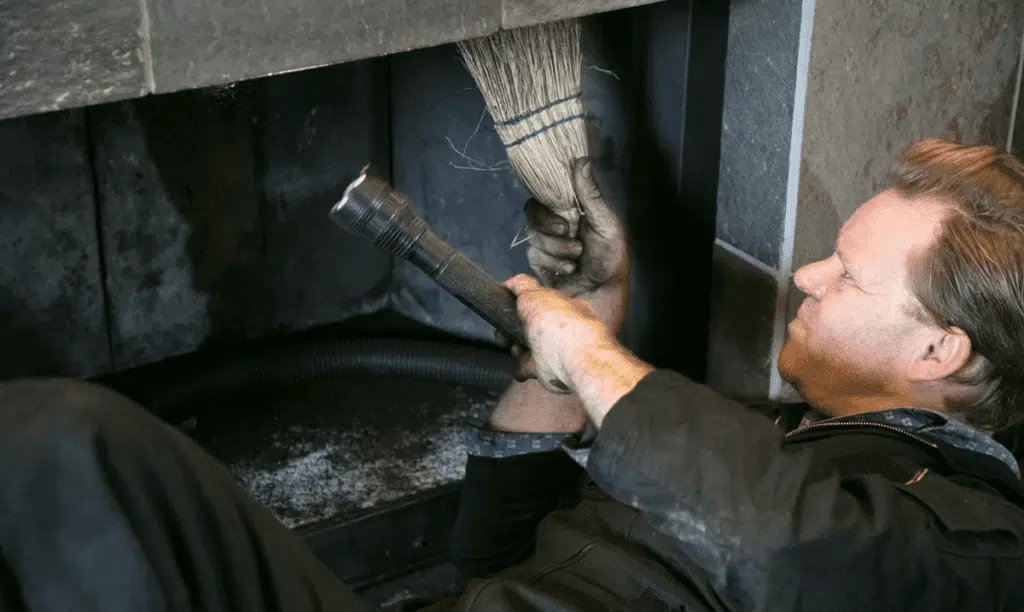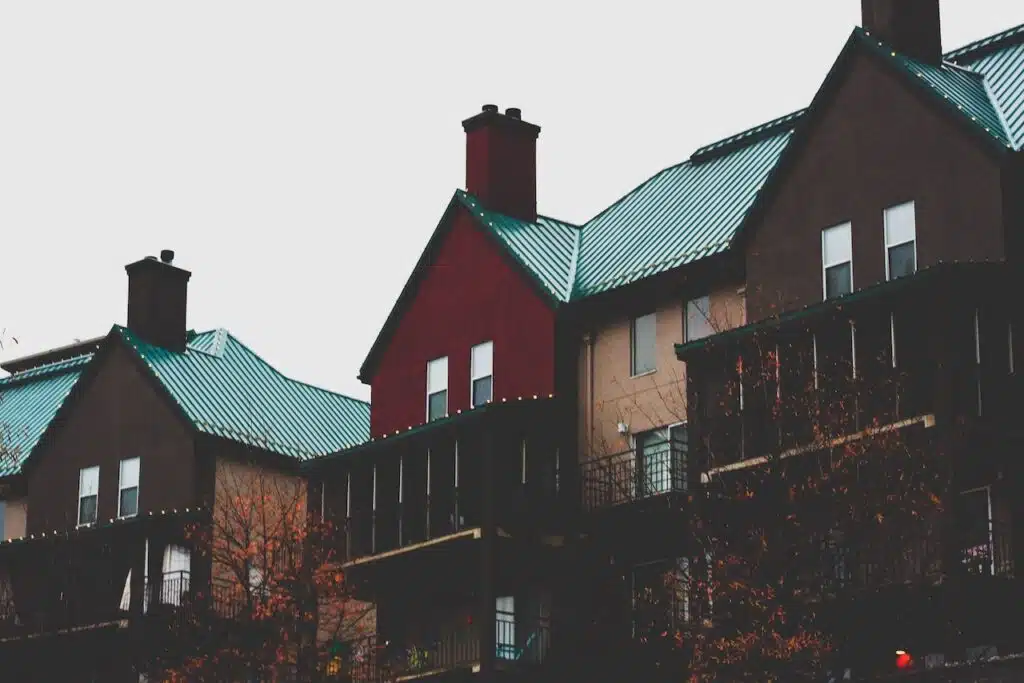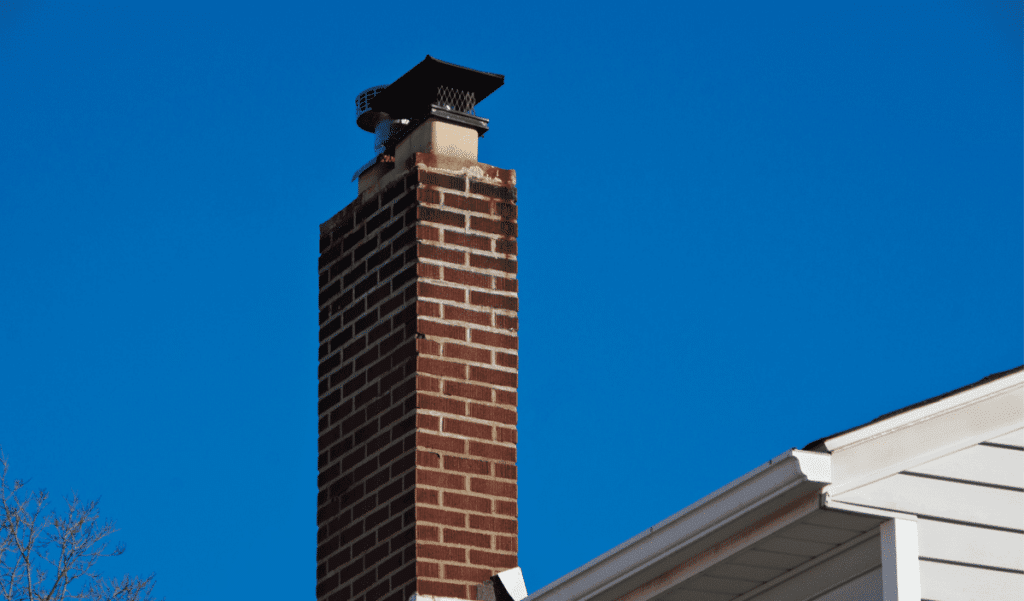
The Importance of Cleaning Chimneys
Chimneys are a vital part of any home that has a fireplace or wood-burning stove. However, many people often overlook the importance of cleaning them regularly. This can lead to a buildup of creosote, a flammable substance that can cause dangerous chimney fires.
Having your chimney cleaned on a regular basis not only ensures your safety but also increases the efficiency and lifespan of your fireplace or stove. When creosote builds up in the chimney, it reduces airflow and makes it harder for smoke to escape.
This can lead to poor combustion and even carbon monoxide poisoning. Therefore, it’s important to keep your chimney clean to prevent any potential hazards.
Personal Experience with Chimney Cleaning
When I first purchased my home with a beautiful brick fireplace, I was excited about cozy nights by the fire. However, as winter approached and I started using it more frequently, I began noticing an unpleasant smell coming from the fireplace.
It was then that I learned about the importance of cleaning chimneys. I decided to take matters into my own hands and attempt to clean the chimney myself.
Let me tell you – it was no easy feat! After hours of scraping away at creosote buildup with my DIY tools, I realized this was not something I should be doing alone without proper training and equipment.
That’s when I decided to hire a professional chimney sweep who not only did an excellent job but also provided me with valuable tips on how to maintain my fireplace for years to come. From this experience, I learned firsthand how vital regular cleaning is for maintaining both safety and efficiency in your home’s heating system.
Why Chimney Cleaning Matters
Chimney cleaning is an essential aspect of maintaining a safe and efficient fireplace. The primary reason for chimney cleaning is to remove creosote buildup. Creosote is a highly flammable substance that forms inside the chimney when wood or other organic materials are burned.
Over time, creosote can accumulate and harden, creating a potential fire hazard. The amount of creosote buildup depends on several factors, including the type of fuel burned, the frequency of use, and the condition of the chimney itself.
A poorly insulated or damaged chimney can lead to excessive creosote buildup because it reduces airflow and causes gases to cool before they exit through the chimney. Creosote buildup can also occur when incomplete combustion happens due to a lack of oxygen in the burning process.
Not cleaning your chimney regularly can result in severe consequences. One of the most significant dangers is a potentially catastrophic house fire caused by accumulated creosote catching fire inside the chimney.
The high temperatures generated during a house fire fueled by built-up creosote could create an inferno that consumes not just your home but also endangers lives in nearby buildings. Another issue with not cleaning chimneys regularly is carbon monoxide poisoning which occurs when there’s incomplete combustion due to clogged chimneys which prevent enough ventilation for smoke expulsion causing carbon monoxide gas to back up into your living space instead of going up through the vent pipes as it should.
RELATED: Clear the Smoke: The Importance of Chimney Clean and How to Do It Right
Potential Dangers Of Not Cleaning Your Chimney Regularly
House Fires and Carbon Monoxide Poisoning
Fires caused by heavy buildups on chimneys are much more common than people might expect them to be; it’s essential to take preventive measures such as regular inspections and cleanings at least once per year, with additional cleanings required if using wood-burning stoves frequently. Carbon monoxide poisoning symptoms include dizziness, nausea, headaches, and confusion.
It’s crucial to ensure that your chimney is free of any blockages as early as possible to avoid severe health risks. In the next section, we’ll discuss how to clean your chimney properly and safely.
How to Clean a Chimney
As important as cleaning your chimney is, it can be a daunting task for those who have never done it before. However, with the right tools and a bit of guidance, anyone can clean their chimney safely and efficiently.
Tools Needed for Chimney Cleaning
Firstly, it is essential to have the right tools for the job. You will need a ladder to access the roof, safety gloves and goggles to protect your hands and eyes from soot and debris, a dust mask to prevent inhalation of dangerous particles, stiff-bristled brush(es) specifically designed for chimney cleaning, a flexible rod system that reaches the entire length of your chimney flue, and plastic sheeting or tarps from protecting furniture or flooring from any falling debris.
Step-by-Step Guide on How to Clean a Chimney
- Start by setting up your ladder securely against your roofline. Ensure that someone else is around in case of an emergency.
- Cover any nearby furniture or flooring with plastic sheeting or tarps.
- Put on safety gloves and goggles, as well as a dust mask.
- Access the chimney flue via the top of your roof.
- Begin brushing away any loose soot or debris that you can reach using a stiff-bristled brush.
- Insert your flexible rod system into the chimney flue while still at the top of your roof.
- Slowly work through each section of the chimney flue using circular motions, with each section lasting no longer than 20 minutes.
- As you extract each section of the rod from inside the flue space over time will increase until all rods are out; reverse the procedure while removing rods from inside
- Finally, sweep up any fallen debris using another round of brush
- Clean up the exterior area around where you were working, and you’re done!
Safety Precautions to Take During the Cleaning Process
Cleaning a chimney can be hazardous, so it’s essential to take the necessary safety precautions.
- Always wear safety gloves, goggles, and a dust mask when cleaning your chimney.
- Ensure that your ladder is set up securely against the roofline and have someone else present in case of an emergency.
- Make sure that the chimney flue is clear of any blockages before you begin cleaning to avoid fires or carbon monoxide poisoning.
- Never burn wood or other materials in your fireplace while cleaning the chimney to prevent accidents and keep yourself safe.
Signs That Your Chimney Needs Cleaning
Chimneys are important for keeping your home warm and cozy during the colder months. However, if not properly maintained, they can also be a potential safety hazard.
One of the most important things to know about your chimney is when it needs cleaning. Here are some common signs that indicate it’s time for a chimney cleaning:
Reduced Draft
A reduced draft in your fireplace is one of the most obvious signs that your chimney needs cleaning. This occurs when there is a blockage in the flue, which prevents smoke from escaping properly. As a result, you may notice an increase in smoke and soot inside your home, as well as a strong smoky odor.
Crumbling Flue Tile
Flue tiles are responsible for directing smoke out of your chimney and away from your home. If you notice pieces of tile falling into the fireplace or onto the roof, this could be an indication that the tiles have cracked or deteriorated over time. Crumbling flue tiles can lead to blockages and cause smoke to back up into your home.
Importance of Regular Inspections and Cleanings
Regular inspections and cleanings are crucial for maintaining a safe and efficient fireplace. It’s recommended to have your chimney inspected at least once per year by a professional chimney sweep who can identify any potential issues before they become major problems.
Regular cleanings will remove creosote buildup, debris, or any other blockages that may be obstructing proper airflow. It’s important to note that even if you don’t use your fireplace often or only burn small amounts of wood at a time, regular inspections and cleanings are still necessary.
A buildup of creosote can occur even with infrequent use and can pose serious risks to both you and your home if left unaddressed. Don’t wait until your chimney is showing signs of damage or blockages – be proactive and schedule regular inspections and cleanings to ensure the safety and efficiency of your fireplace.
RELATED: The Importance of Chimney Cleaning for a Safe and Cozy Home
DIY vs. Professional Cleaning
Cleaning a chimney can be a daunting task, and it’s natural to wonder whether you should tackle it yourself or hire a professional. While there are certainly pros and cons to both options, ultimately, the decision comes down to your level of experience and comfort with the process. Here are some things to consider when deciding whether to clean your chimney yourself or hire someone else:
Pros and Cons of DIY Chimney Cleaning
One major advantage of cleaning your own chimney is that it can save you money. Professional chimney sweeps can charge anywhere from $100-$300 for their services, depending on the location and complexity of the job.
If you’re willing to put in the time and effort yourself, you could potentially save hundreds of dollars. However, there are also some downsides to DIY chimney cleaning.
- For one thing, it can be dangerous if you don’t know what you’re doing. Climbing up on your roof with heavy equipment poses a risk of falls or other accidents.
- Additionally, if you don’t clean the chimney properly, you could end up making things worse instead of better. For example, if you don’t remove all the creosote buildup from your chimney walls, it could ignite and cause a fire later on.
Benefits of Hiring a Professional Chimney Sweep
While cleaning your own chimney has its benefits, hiring a professional is often the safer choice. Professional chimney sweeps have years of experience in this field and know exactly what they’re doing. They also have specialized tools and equipment that most homeowners wouldn’t have lying around in their garages.
Another benefit of hiring a professional is that they can usually spot other issues that might not be immediately apparent to an untrained eye. For example, they might notice cracks or damage in your flue liner that could cause problems down the line.
Ultimately, whether you choose to clean your own chimney or hire someone else will depend on your level of experience, comfort with the process, and budget. However, if you’re unsure about anything at all, it’s always better to err on the side of caution and hire a professional to do the job safely and effectively.
Fun Facts About Chimneys
Chimneys have been around for centuries, and they’ve played a significant role in architecture and heating homes. Here are some fun facts about chimneys that you may not know:
Historical Significance of Chimneys in Architecture
In ancient times, chimneys were considered a luxury item. Wealthy families would build them to keep their homes warm during the cold winter months.
Chimneys became more common during the Tudor era in England (1485-1603), where they were built using bricks and mortar. During the Industrial Revolution in the 19th century, chimneys became essential for factories, mines, and mills.
The taller the chimney, the better it was at dispersing smoke and pollutants into the air. In fact, some of the tallest brick structures in the world are chimney stacks from industrial factories.
Unique Types of Chimneys Around the World
Chimney designs vary depending on factors such as location, climate, and available materials. In Japan, for example, traditional homes have a unique type of chimney called an irori that’s used for cooking food over an open fire. In Iceland, houses have turf roofs with a chimney made from driftwood to prevent heat from escaping through cracks caused by earthquakes or erosion.
Another unique type of chimney is found in Morocco’s desert cities where houses are built with windcatchers – tall towers designed to capture breezes and direct them down into living spaces to keep residents cool during hot summer months. Whether they’re built for luxury or necessity reasons or designed to fit specific geographic locations – chimneys continue to serve as important architectural features today.
Frequently Asked Questions
Why do we need to clean chimneys?
Cleaning chimneys is crucial to remove obstructions such as soot and creosote, which can impede the proper discharge of smoke and gases, and to mitigate the danger of a chimney fire. Consistent cleaning also enhances the performance of the fireplace or heating appliance and averts the dispersion of harmful substances within the residence.
What is the most effective way to clean a chimney?
The most effective way to clean a chimney involves using a specialized chimney brush that corresponds to the size of your chimney, together with flexible rods for accessing the entire length of the chimney. For stubborn residues, chemicals designed to remove creosote can also be employed.
Is it secure to clean a chimney?
When conducted by a professional chimney sweep equipped with the appropriate training and tools, chimney cleaning can be secure. On the other hand, undertaking chimney cleaning personally can pose risks without the correct expertise, equipment, and safety measures.
How can one clean the inside of a chimney?
Cleaning the inside of a chimney requires a chimney brush that aligns with your chimney’s dimensions and flexible rods to extend the brush’s reach. You scrub the chimney’s interior from the top, using the brush and rods to push the soot and creosote down into the fireplace, from where it can be vacuumed or swept away.
What is the role of a chimney?
The role of a chimney is to ensure the safe expulsion of smoke, gases, and other combustion byproducts from a fireplace or heating system out of a house. Additionally, it generates a draft that supplies the fire with oxygen, promoting efficient burning.
Why is having a chimney crucial?
Having a chimney is crucial as it ensures the safe use of a fireplace or heating appliance. Without an operational chimney, hazardous gases like carbon monoxide could build up within the dwelling, and the risk of a fire due to creosote accumulation escalates.
Conclusion
Why It’s Important to Clean Your Chimney Regularly
Cleaning your chimney is an essential part of maintaining a safe and efficient fireplace in your home. Neglecting this crucial step can lead to the buildup of dangerous creosote, which can cause fires or other hazards. By cleaning your chimney regularly, you can ensure that your home remains safe and that you and your family can enjoy the warmth and comfort of a cozy fire.
Final Thoughts and Recommendations
To help maintain a safe and efficient fireplace, there are several things you can do beyond regular chimney cleanings. First, make sure to use only properly seasoned wood when burning in your fireplace.
This will minimize the amount of creosote buildup in your chimney. Additionally, always use a screen or glass door to prevent sparks from flying out of the fireplace.
It’s also important to have regular inspections by professional chimney sweeps to check for any potential issues with the structure or liner of the chimney. By taking these steps, you can ensure that your fireplace is operating as safely as possible.
Remember that enjoying a cozy fire in the winter months is one of life’s simple pleasures. By taking care of your chimney and maintaining good practices while using it, you can continue to enjoy this experience safely for years to come.






